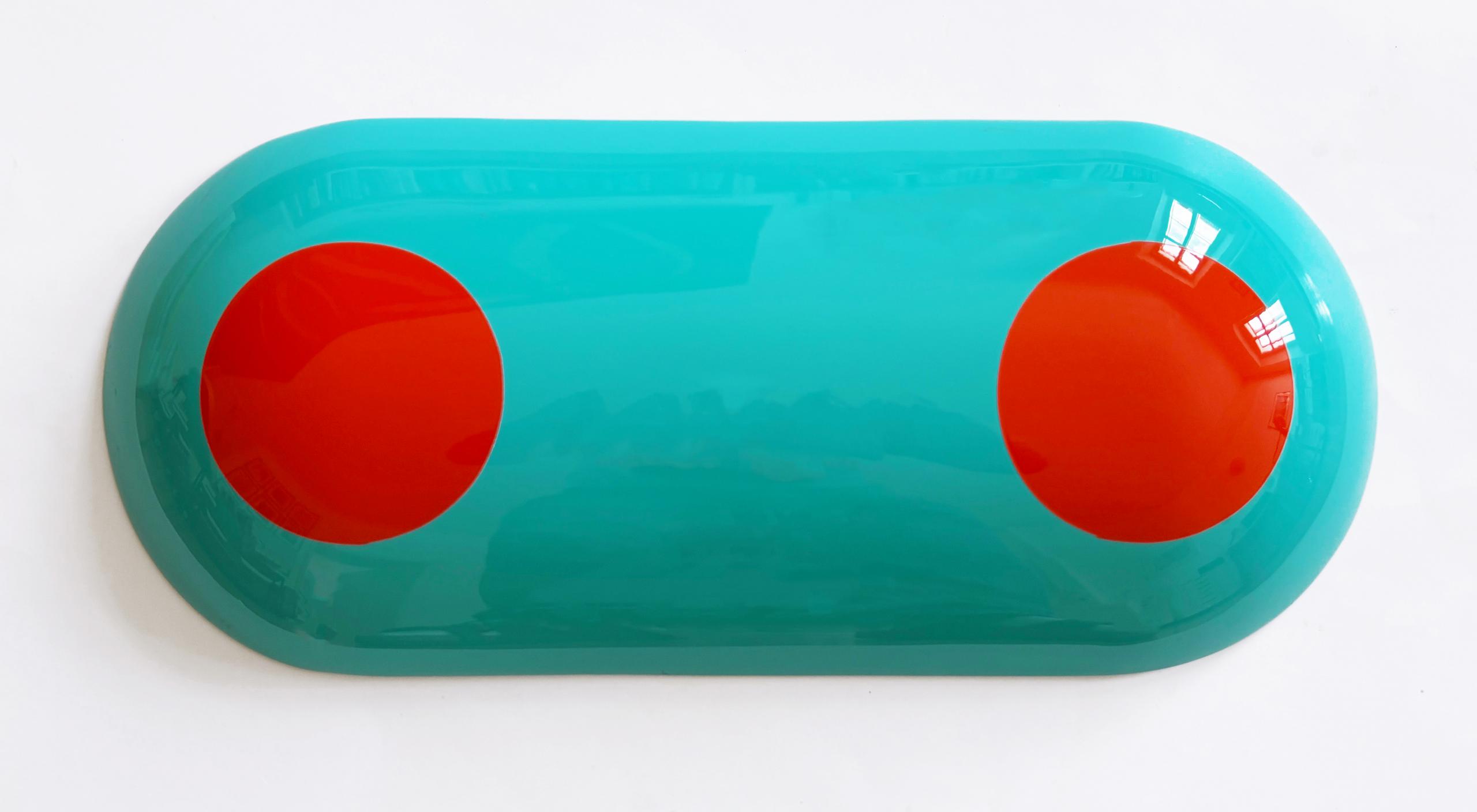
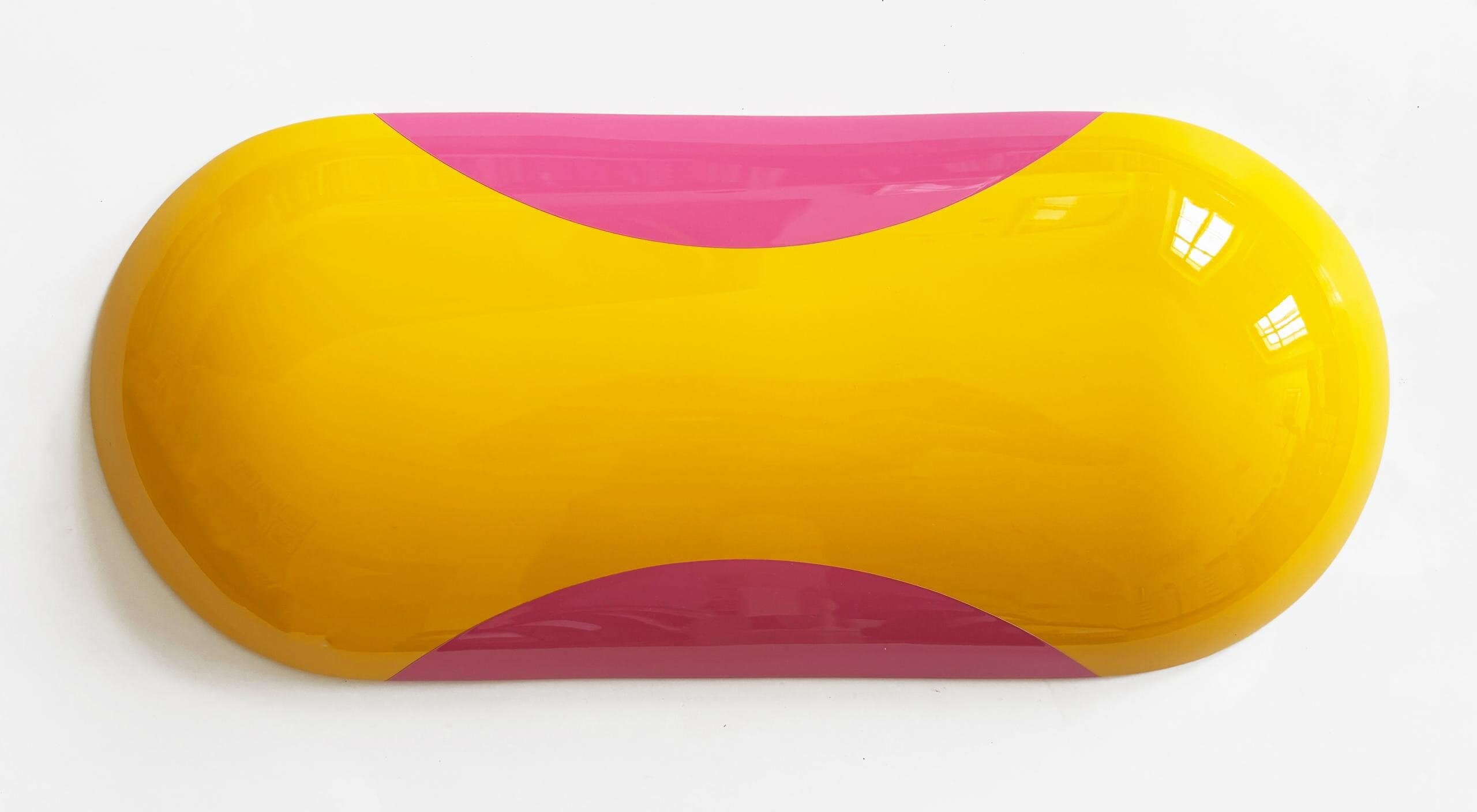
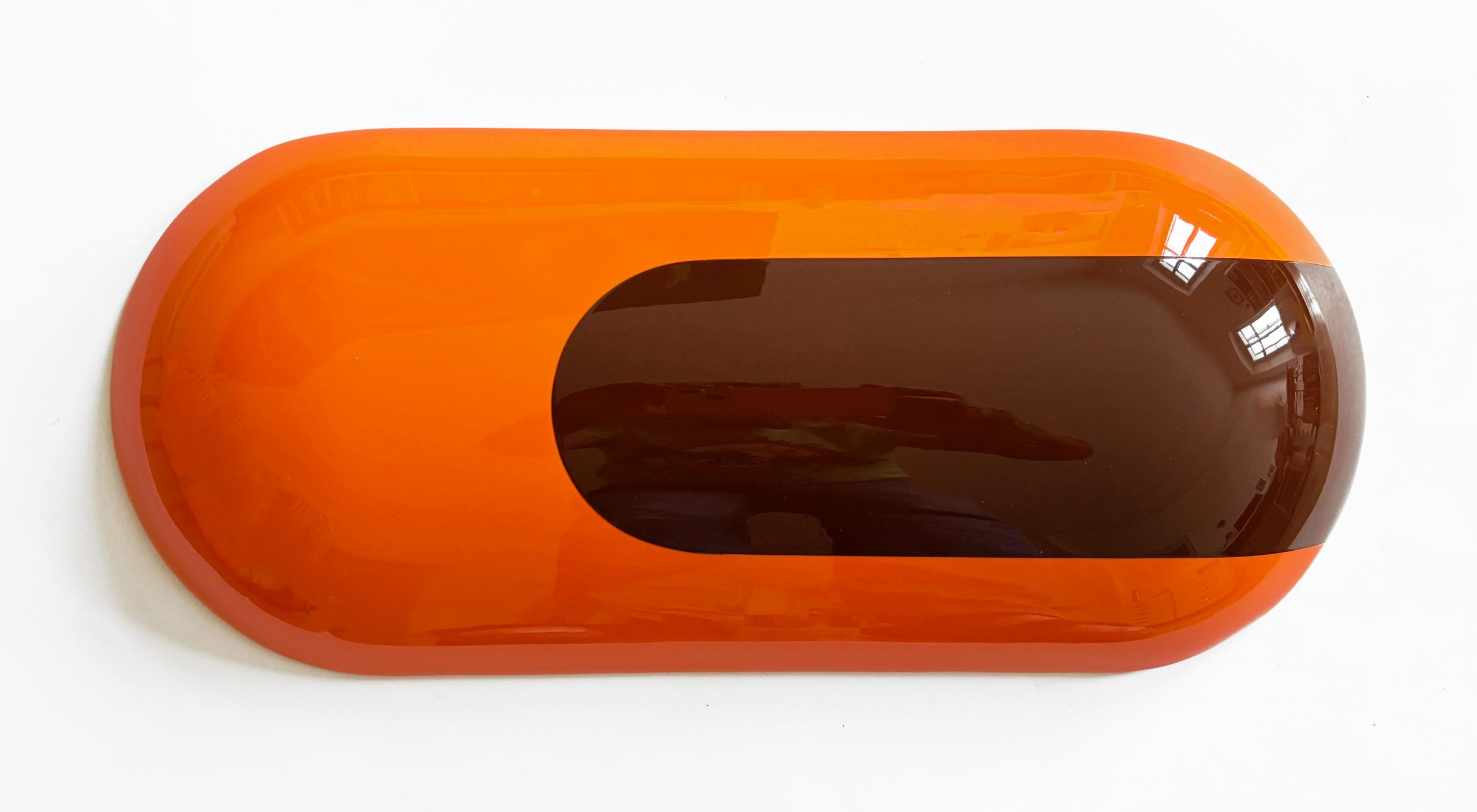
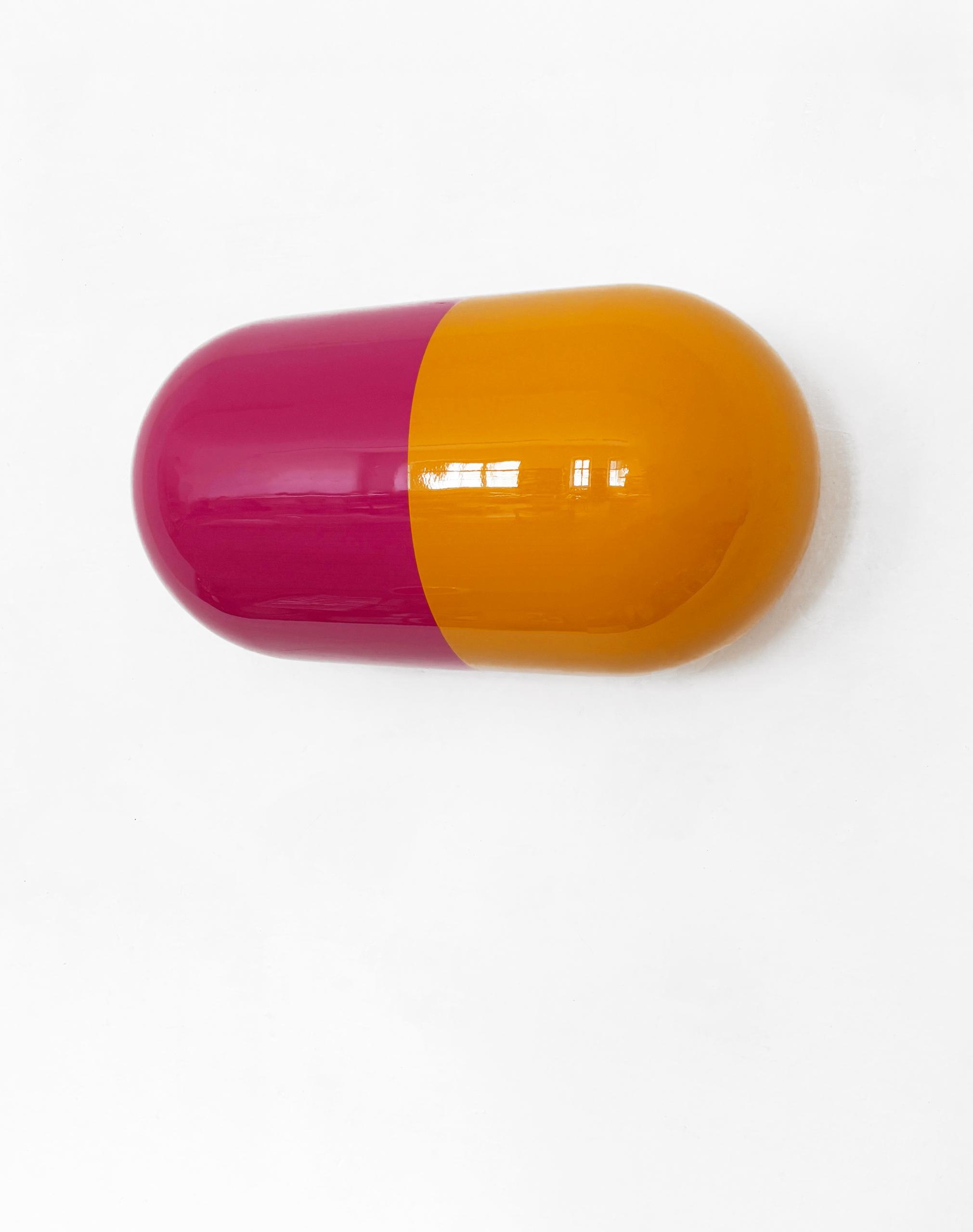
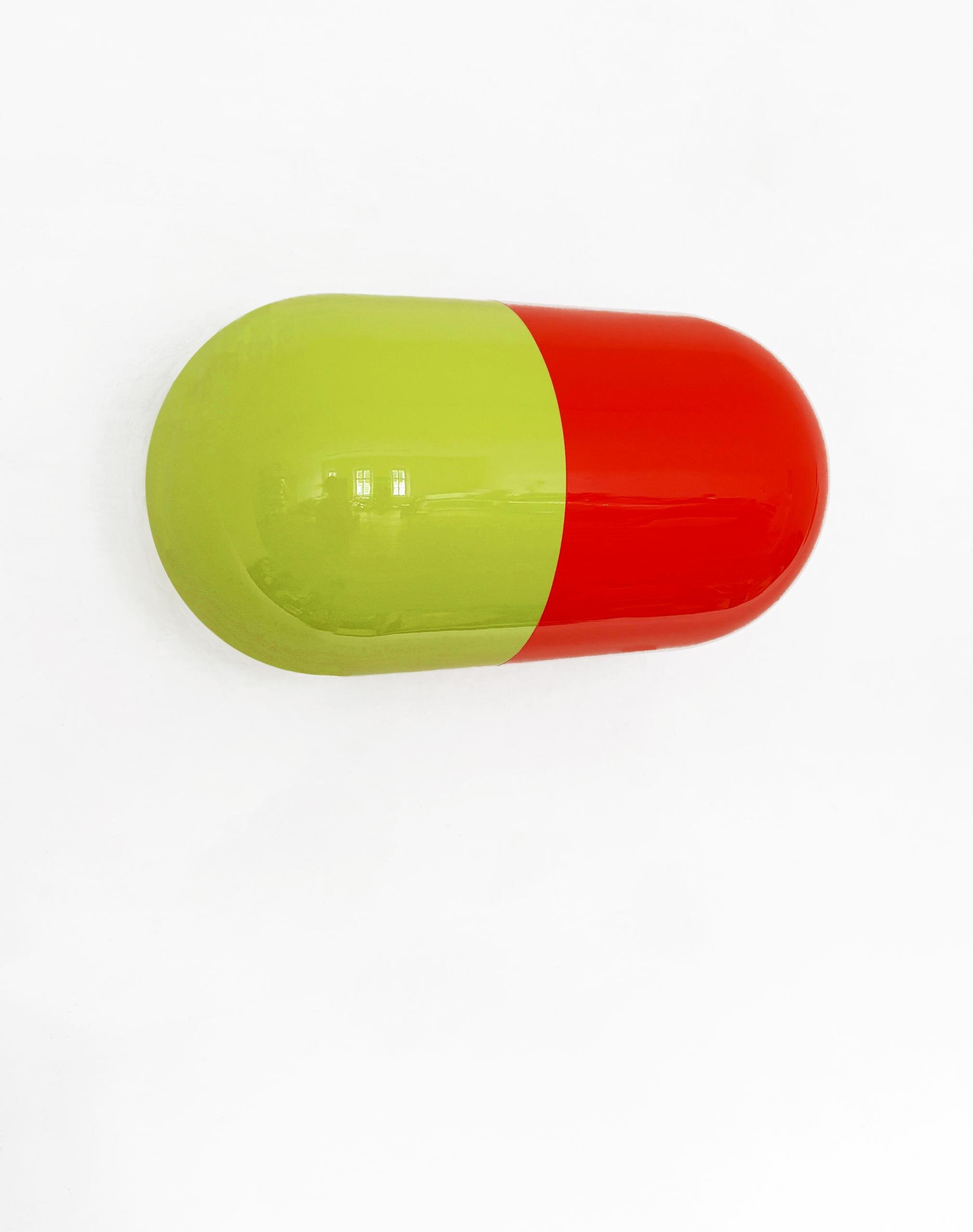
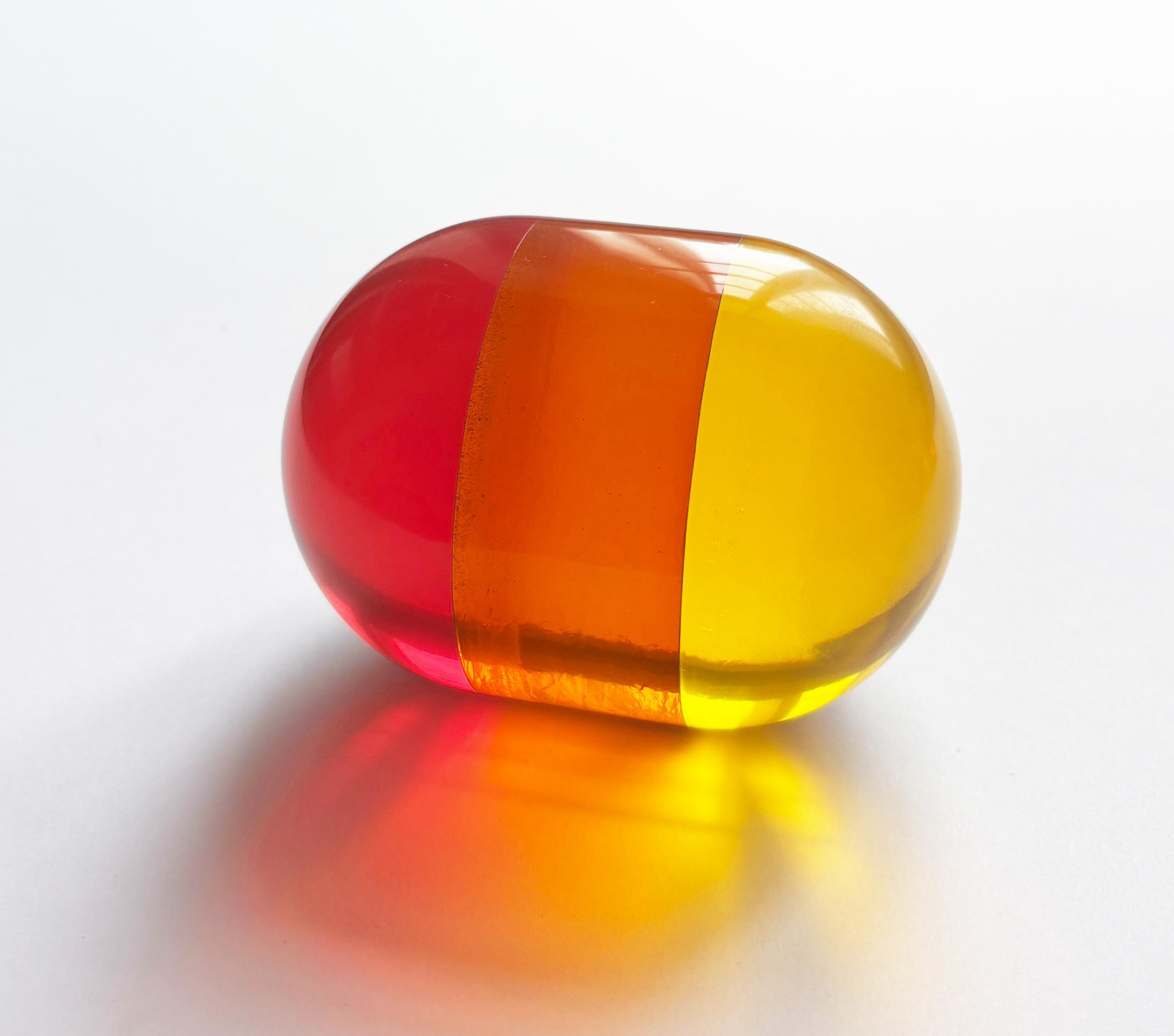
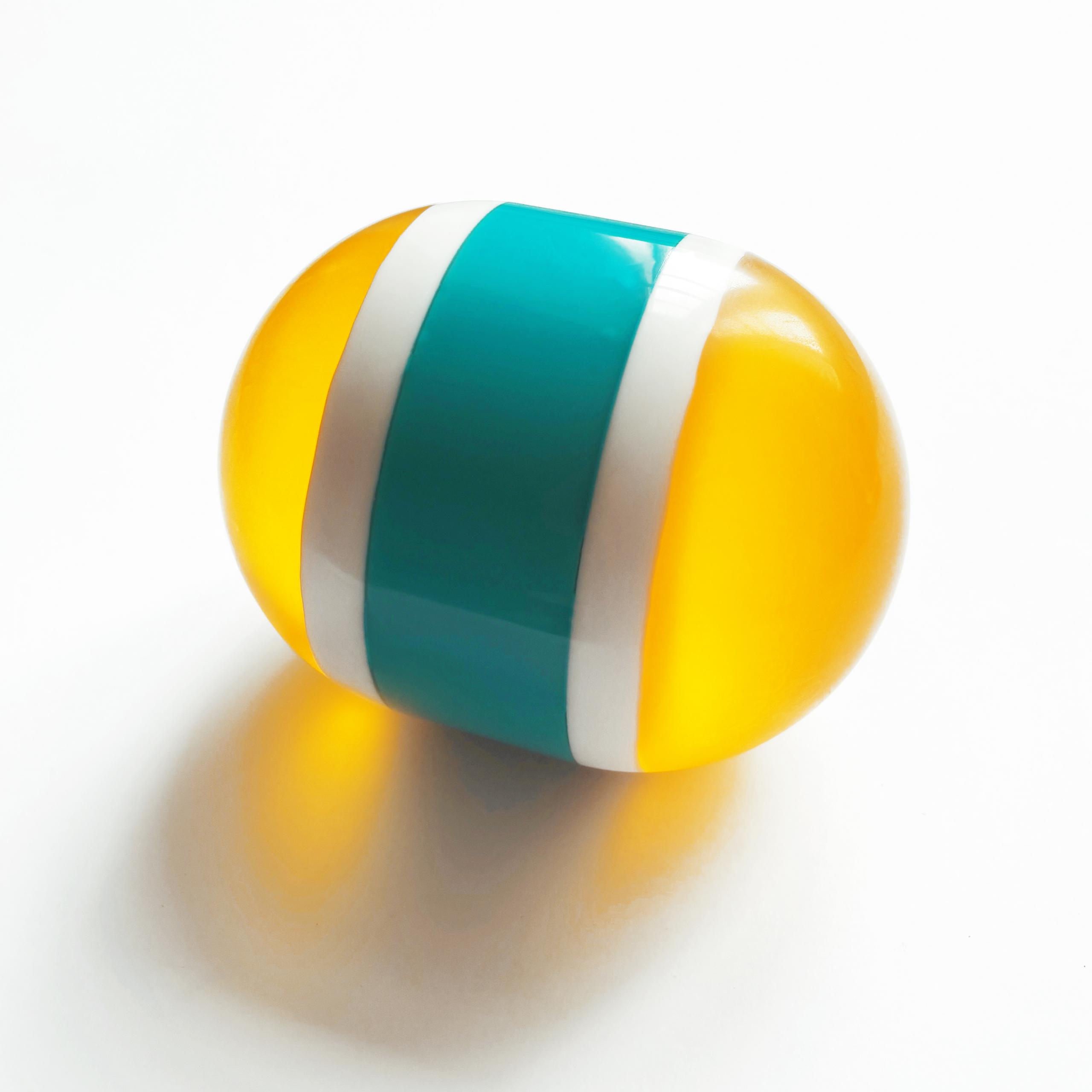
About the exhibition
Uta Weber
HAPPYPILLS
Uta Weber’s art, particularly her works under the title HAPPYPILLS, impressively reflects the complexity of modern life and the ambivalence of consumption, technology, and identity. Her use of pills as a central motif functions as both an aesthetic and a philosophical and sociocultural statement.
Uta Weber designs her works on the computer, which allows her a thoughtful and constructed approach to color and form language. Geometric shapes and bright colours combine to form autonomous colour bodies that seductively enhance each other in terms of form, material, colour, and appearance. She uses a variety of materials, including coloured epoxy resin, CNC-machined plastics, and aluminium coated with automotive paint. These technical processes create smooth, glossy surfaces that exhibit clear, powerful, and distinct colour schemes, whose proportionality and contrast speak a delightful geometric-abstract language.
Furthermore, the appealing materiality and Weber’s vibrant colour scheme of the objects evoke associations with beauty products, thus reflecting the ideals of consumer society. The title “HAPPYPILLS” refers to the pill as both a form and visual medium, addressing the philosophical and sociocultural implications of synthetic substances in today’s world. The pills serve as a provocative metaphor for the challenges of modern life, in which access to happiness and contentment appears controllable.
Uta Weber’s origins in the West German industrial city of Leverkusen have significantly influenced her creative process. Her childhood in the 1970s was characterized by an abundance of chemical products and an aesthetic that evoked both attraction and aversion. Weber recalls experiences in “nature,” such as the colourful skies created by industrial emissions, which she found impressive yet unusual. These impressions led to lively discussions with her father, who was then a chemist at the Bayer paint and pharmaceutical company. Her experiences are reflected in her art, in which she plays with the duality of beauty and toxicity.
Weber’s art is rooted in a broad art-historical context, ranging from Bauhaus to Minimalism to Pop Art. These movements have shaped the use of colour, form, and material in art and also influence Weber’s approach. Her works engage in dialogue with contemporary movements such as NeoGeo, which address themes of mass production and the geometrization of social space.
Uta Weber’s HAPPYPILLS are a powerful example of the intertwining of personal biography, social critique, and art-historical movements. The aesthetic quality of Weber’s work generates a highly positive emotional impact that directly engages the viewer. Her pill is a sensual symbol of the contradictions and complexity of our time. It raises the question of happiness and encourages reflection on the relationship between humans, nature, and the human-made environment without drifting into superficial moral judgments.